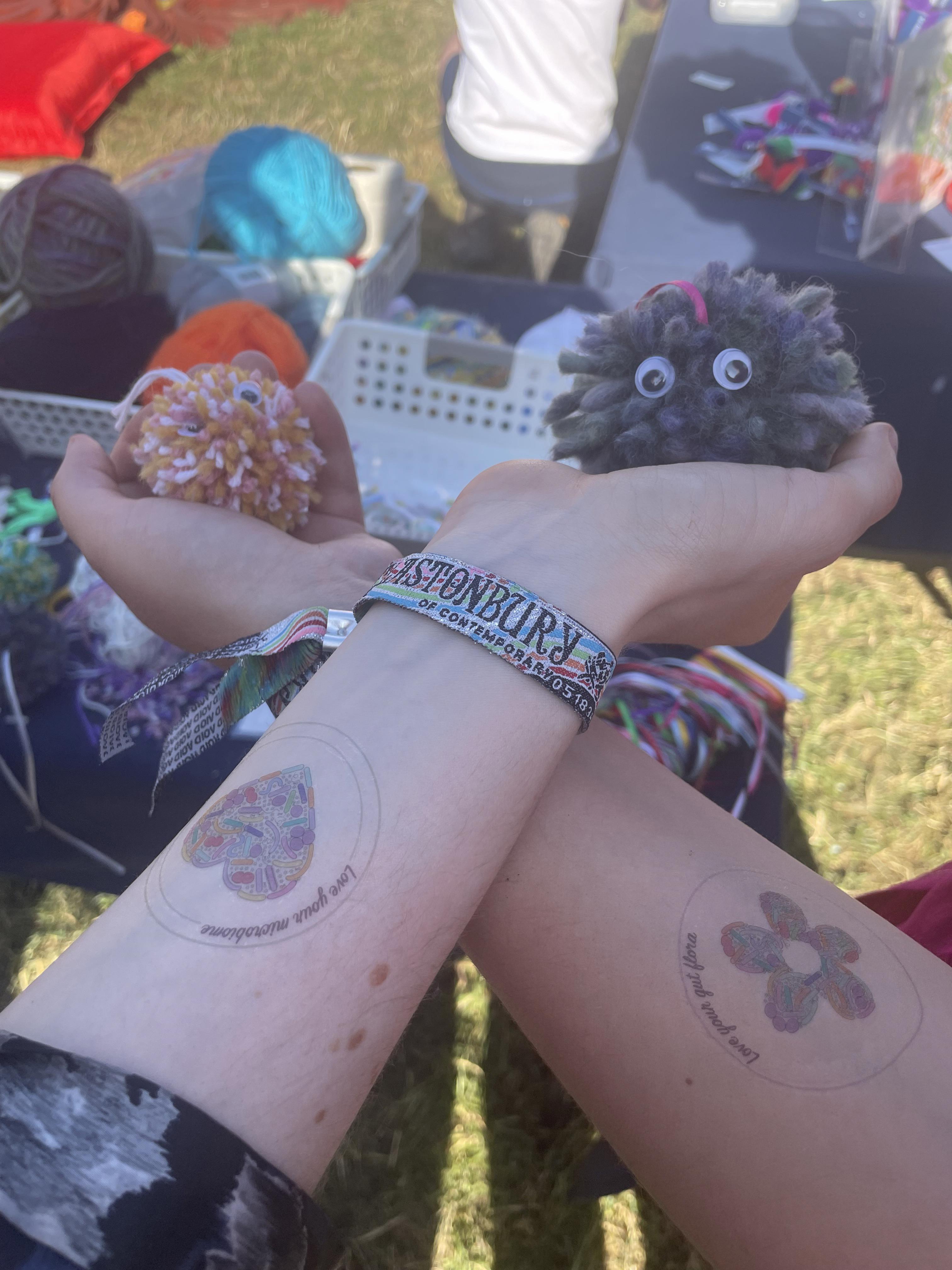
We recently supported a project to engage with the public around the gut microbiome at the Glastonbury music festival, with funding from our BSI Communication and Engagement Grant scheme. Here, the organiser, Dr Rebecca Jeffery, shares how the project was developed, its impact and the importance of opening communications between scientists and the public.
The gut microbiome is the collective term for the trillions of bacteria, viruses, fungi and archaea that colonise the gastrointestinal tract. Far from being inert bystanders, gut microbes are being increasingly implicated in numerous aspects pertaining to human health, such as enteric pathogen infection, obesity and inflammatory diseases. Our growing understanding of the microbiome has been fuelled by the rapid expansion of this research field which has taken place over the past decade. Naturally, this growth has led to increased media coverage, retail and commercial interest, and public awareness of the microbiome and its importance to human physiology.
An ode to gut flora
In June 2023, we were given the unique opportunity to run a public engagement stall on the gut microbiome at the legendary Glastonbury music festival. As the largest greenfield music and performing arts festival in the world, Glastonbury draws a crowd of approximately 200,000 people and serves as a rich and unique environment in which to talk about microbiome science with members of the public.
Our stall focused on discussing the microbiome, what we are learning about host–microbiome interactions in health and disease, and the potential of therapeutic strategies that aim to harness this knowledge to improve health. Our stall was named the Gut Florists in an ode to ‘gut flora’, a term used interchangeably with gut microbiome, and aesthetically incorporated floral aspects.
To discuss microbiome science in a manner befitting of Glastonbury, we gave away temporary tattoos of the 2023 headliners reimagined as bacterial gut microbiome members by Dr Nick Ilott. The tattoos comprised Escherichia john (representing E.coli), Akkermansia monkeys (A. muciniphila) and Guns N’ Roseburia (genus Roseburia). Perhaps reflective of celebrity status, E. john ‘sold-out’ in just over two days, and we gave away 1,025 tattoos in total. In addition to the tattoos, we also gave out stickers, had a bean ‘bug’ zone and ran ‘adopt a bug’, where stall visitors could choose a pre-made or make their own pom-pom bacteria to accompany them around the festival. In total, we estimate that we had 1,200 visitors to the stall over the weekend.

‘Feeding’ public interest
We collected visitor responses through multiple-choice questions and a general feedback collection point, both of which indicated positive impacts on those who came to the stall. Discussions with the public often focused on dietary interventions and therapeutic strategies linked to gut health, such as increasing fibre and fermented food intake and taking probiotics, likely reflective of increasing availability and advertisement of microbiome-linked products. Many of the food stands at Glastonbury had aspects linked to gut health, for example kimchi was incorporated into meals sold by multiple vendors, which indirectly created an environment receptive to microbiome-related conversation.
In general, while the microbiome and its relevance to health was generally of interest to visitors upon entry, further interactions with stall volunteers led to increased awareness and understanding of the science behind this topic and the current scope and limitations of microbiome research.
A rewarding experience
In addition to the public, running a science communication stall at Glastonbury had many positive impacts on the team of PhD students and early career postdoctoral research scientists involved. Alongside all the efforts that went into organising and bringing concepts into fruition for the stall, discussing science with members of the public was a genuinely rewarding experience for all those involved. We had a broad audience from children to medical professionals, and so conversations were diverse and held on levels relevant to individual scenarios. Overall, discussing the microbiome and science in general at Glastonbury was a great way to open communications between scientists and the public. Gauging public perception of research science will feed into how everyone views their work going forward and highlights the importance of science outreach, especially in a growing field which informs real-world and current commercial and therapeutic avenues.
Dr Rebecca Jeffery, Kennedy Institute of Rheumatology
With thanks to the following from the Kennedy Institute of Rheumatology: Dr Vivian Lau, Dr Ffion Hammond, Elizabeth Jennings, Declan Pang and Alex Grannell for their help in organising and running the stall, and to Dr Nick Ilott for the tattoo artwork.
BSI Communication and Engagement Grant
This grant scheme funds projects to spark interest in and strengthen understanding of immunology, and helps to build your engagement skills. The next deadline is 1 June 2024. Find out more and apply here.
